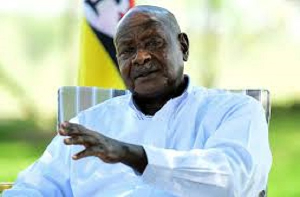Total assets of banks operating in Ghana have expanded significantly at the time that the Ghanaian economy is reported to be recovering.
From April 2016 to April 2017, the country’s total banking assets recorded an annual growth of 31.1 percent to GH¢ 84.49 billion compared with GH¢64.44 billion (16.7% year-on-year) in April 2016.
This is revealed by the May 2017 Banking Sector Report released by the Bank of Ghana (BoG) over the weekend.
Of the total, foreign assets recorded the higher growth compared with domestic assets, although domestic assets constituted the greater proportion of banks’ total assets (91.3% share as at April 2017), according to the report.
The report which was circulated by the Communications Department of the BoG said: “Banks’ foreign assets increased to GH¢7.39 billion in April 2017, up by 48.4 percent year-on-year, from GH¢4.98 billion in April 2016”.
It added that in view of the solid performance, credit continued to pick up in April 2017 shown by the 14.5 percent year-on-year growth to GH¢30.99 billion in net loans and advances from GH¢27.07 billion in April 2016.
While gross advances also recorded an increased year-on-year growth to 16.7 percent in April 2017 from 11.9 percent in April 2016.
The Bank of Ghana’s Banking Sector Report which is published after the Monetary Policy Committee (MPC) meetings added that banks’ investment portfolio (bills and securities) also continued to increase, recording a 57.3 percent year on year growth to GH¢24.80 billion from GH¢15.77 billion over the same comparative periods.
“In terms of the banking industry’s funding structure, deposits, which is the main source of funding for the industry, stood at GH¢52.83 billion (28.4% y/y growth) as at April 2017 compared with GH¢41.14 billion (17.5% year-on-year growth) in the same period last year”.
Borrowing, the second major source of funding for the banking industry, grew by 47.0 percent to GH¢14.56 billion in April 2017 from GH¢9.9 billion in April 2016. The pickup in the banks’ borrowing largely came from the sharp increase in banks’ foreign borrowing after contracting in the corresponding period last year, the report noted.
Growth in short term borrowing also picked up significantly during the review period. The minimum paid-up capital of the banking industry grew by 29.5 percent to GH¢4.14 billion in April 2017 from GH¢3.20 billion in April 2016.
Shareholders’ funds also grew in year-on-year terms by 21.2 percent to GH¢11.56 in April 2017 from GH¢9.54 billion in April 2016, pointing to an increase in the industry’s reserves over the period under review, it added.
Meanwhile, the BoG’s April 2017 credit conditions survey continued to point towards a net ease in banks’ overall credit stance to enterprises and households similar to trends in the February 2017 survey round.
The overall net easing in the credit stance to enterprises was largely reflected in loans to large enterprises and small and medium enterprises (SMEs). The survey also reported a net ease in credit stance on short term enterprise loans, whereas long term enterprise loans recorded some marginal tightening.
The survey findings also showed a net ease in banks’ credit stance on loans to households for consumer credit and other lending, while the credit stance on loans for house purchases tightened slightly relative to the February 2017 survey round.
The broad net ease in banks’ credit stance on loans follows the reduction in the monetary policy rate in March 2017, the continued decline in the benchmark 91-Day Treasury bill rate and improved expectations regarding the performance of the economy.
Banks’ inflation and lending rate expectations continued to trend downward, in line with successive declines in headline inflation since September 2016. The moderation in inflation expectations was attributed to the sustained decline in the inflation rate, stability in the exchange rate, reduction in the policy rate, declining 91- Day Treasury bill rate, and also improved sentiments regarding the performance of the economy.
At the last MPC press conference, the Governor of the Bank of Ghana, Dr Ernest Addison noted that increased oil production from both Jubilee and Tweneboa, Enyenra, Ntomme (TEN) fields and the coming on stream of further activity in the oil and gas sector from the Sankofa Gyenyame Ntomme (SGN) fields by the third quarter should give added impetus to overall growth prospects.
“In sum, there is evidence to suggest that the economic imbalances that existed at the end of 2016 are giving way to stronger fundamentals with economic activity expected to pick up strongly in the period ahead, albeit below potential”, Dr Addison said.
The 2017 budget indicates a return to the path of fiscal consolidation. The reduction in the fiscal deficit for the year is expected to foster more stable macroeconomic conditions. Rigorous and steadfast implementation of the budget will therefore be critical to the outlook.
Business News of Thursday, 15 June 2017
Source: africaneyereport.com
Ghana’s total banking assets now at GH¢ 84.49 billion
Entertainment












